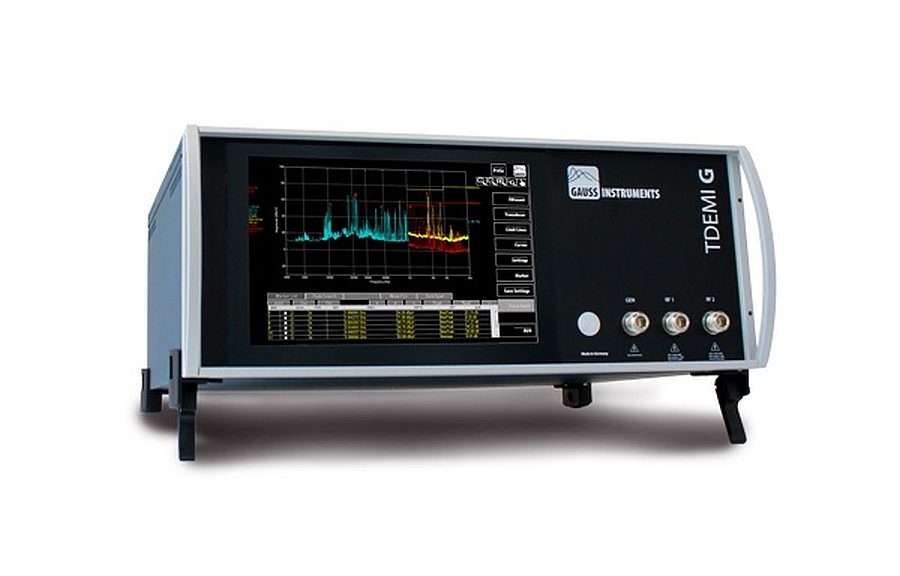- The German manufacturer Gauss Instruments offers an evolution of its TDEMI 1G family EMI receiver.
- The new version of the TDEMI G is based on the latest generation of analog-to-digital conversion and FPGA-based signal processing technologies.
According to Gauss Instruments, the TDEMI 1G receiver was the first instrument to reduce a 30 MHz – 1 GHz Quasi-Peak measurement from 9 hours to 64 seconds. The German manufacturer demonstrated this in the test laboratory at the opening of the new EMC center at the VDE test institute in Offenbach in 2008.
The schematic diagrams and FFT measurement methodology of the TDEMI 1G user manual have since been approved and integrated into the CISPR 16-3, CISPR 16-2-1, CISPR 16-2-2 and CISPR 16-2-3 standards.
The new TDEMI G receiver is capable, depending on the model, of measurements in the 30 MHz, 1 GHz, 3 GHz, 6 GHz, 9 GHz, 18 GHz, 26 GHz, 40 GHz, and 44 GHz frequency ranges. The basic models of the instrument have traditional and FFT-based measurement modes by default.
RF performance and measurement dynamics have been improved since the first generation TDEMI G by replacing older components with high-resolution analog-to-digital converters and FPGAs. This allows the new TDEMI G series receivers to achieve linear dynamic ranges of about 90 dB in the real-time band.
The use of FPGA enables increased scan rates for all TDEMI G series instruments in basic configurations. This allows measurement times of just 1.5 seconds for conducted emission measurements and about 8 seconds for quasi-peak measurements from 30 MHz to 1 GHz, according to the German manufacturer.
The instrument also incorporates a spectrum analyzer offering both traditional and FFT-based measurement modes. It meets the requirements of radio measurements supporting bandwidths up to 60 MHz.
The new TDEMI G features a high-resolution 8.4″ capacitive multi-touch display and front panel connectors.
The measurement characteristics of the instrument can be extended to the THz frequency range by using external mixers.






